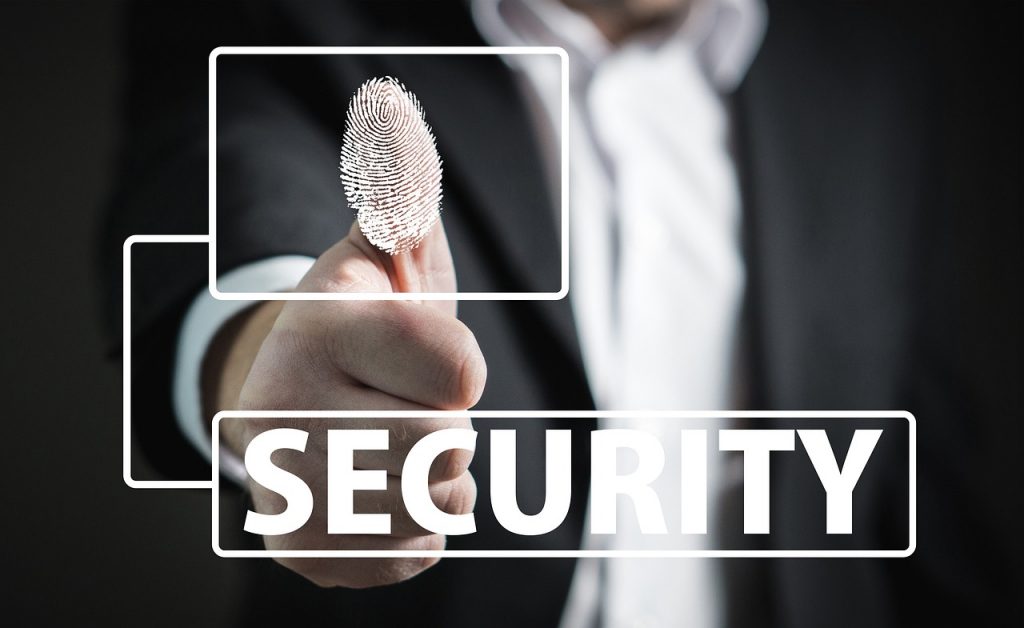Petra Rapaić
Petra Rapaić is a B2B SaaS Content Writer. Her work appeared in the likes of Cm-alliance.com, Fundz.net, and Gfxmaker.com. In her free days, she likes to write and read fantasy.
When it comes to digital security, there are plenty of ways businesses can boost it and make life hard for those pesky...

Image Credits: pixabay
When it comes to digital security, there are plenty of ways businesses can boost it and make life hard for those pesky cyber villains. Unfortunately, the threats are evolving all the time, and hackers are getting more creative and daring by the day.
Did you know that revenue for the data security market is to go up to 7 billion US dollars this year? With an annual growth of 11.2%, till 2029 revenue could be 12 billion US dollars. That sounds serious, but today data is more valuable than ever and none of this should surprise us.
Converting audio to text can look like a productivity tool at first glance, but actually, it can be a very powerful asset to increase digital security. For instance, if you use audio to text converter to transcribe phone calls, meetings, or voice messages into text, you can create a searchable and secure record of communication for your business.
This way companies are to monitor sensitive discussions, track compliance, and detect any suspicious activities that may have slipped under the radar during verbal exchanges. When you have written transcriptions, that’ll help mitigate the risk of miscommunication and make sure there’s a clear audit trail.
We all know passwords can be a nightmare–they need to be complex, unique, and long. Yet so many people still use ‘password123’ or even worse, ‘admin’ for critical accounts. Not to mention birthday dates or your own names. Well, that’s a big no-no.
Enter Two-Factor Authentication (2FA), your new best friend in the fight to increase digital security.
With 2FA, you’ll be adding a second layer of protection by requiring something more than just a password. It could be a text message code, an authentication app, or even a fingerprint or face scan (hello, James Bond vibes!). So even if a hacker somehow cracks your password, they’ll still need to go through another layer of security. It’s like adding a deadbolt to your original door. Or chain, at least.
Bringing 2FA into your business’s digital infrastructure is a must. Most major platforms support it, and if yours doesn’t, it’s time to consider making the switch to one that does. You see, it’s simple, yet super effective.
Imagine all your company’s sensitive data is sitting in a suitcase chained to a bench at the airport. You wouldn’t leave it there unprotected, right? That’s exactly what’s like if your data isn’t encrypted.
What does encryption do? It scrambles your data so it looks like gibberish to anyone who isn’t supposed to see it. It’s like giving your suitcase a fancy lock and making sure only authorized people have the key. End-to-end encryption will make sure that even if a hacker intercepts your data, they won’t be able to read it without the encryption key.
Whether it’s emails, internal communication, or customer information, encryption data is great for keeping prying eyes away. Plus, who doesn’t love the feeling of being a digital spy?
Software vulnerabilities are like little cracks in your company’s digital foundation, and hackers just love to stick a code into them. The good news? Software companies are working around the clock to fix these cracks by releasing updates and patches. The bad news? Many businesses are too slow to install them.
Leaving software unpatched is like leaving your front door wide open. Those critical updates are released for a reason, and if you ignore them, it can result in major breaches. So be sure to regularly update all software, whether it’s your operating system, antivirus, or the plugins on your website.
Pro tip: Set up automatic updates whenever possible. Your team won’t have to think about it, and your security stays airtight.
It doesn’t matter how many firewalls and fancy security protocols you have in place, your employees can still be your weakest link. There are some hacker tricks like phishing emails that solely rely on human error to bypass even the best security systems. That’s why employee training is unavoidably important.
You can hold regular cybersecurity workshops to educate your teams on the latest threats and scams. Teach them how to recognize phishing emails, suspicious links, and fake phone calls. It’s not just about telling them what to look out for, but making it fun and engaging so they remember the lessons.
For example, you can throw in some simulations. Send out fake phishing emails to test your team’s reaction. Later you can reward those who spot the scam.

You can wake up one morning, grab your coffee, and log into your company’s server, only to find out everything’s gone. Poof. Vanished. A nightmare scenario, right? That’s what a ransomware attack or hardware failure can do if you haven’t backed up your data.
Just remember that the effort in this field is minimal but it brings a lot. A regular, automated backup system can save your business from disaster. In case something goes wrong, you can recover your files very fast once you have their copies safely stored in a secure, offsite location (think cloud or external drives).
Make sure to schedule frequent backups, and test your recovery plan regularly. It’s like wearing a seatbelt–you hope you’ll never need it, but you’ll be glad it’s there if you do.
Not everyone needs to know everything. Just the same, not everyone in your company needs access to every piece of data, and that’s where Role-Based Access Control (RBAC) comes to rule. RBAC limits who can see what based on their role in the organization.
For instance, your HR team doesn’t need to see the company’s financial records, and your marketing department shouldn’t be able to linger over employee medical records. To make your company effective and keep your data private, RBAC is a perfect solution to make sure that each person only has access to what they need to do their job–and nothing more.
It’s like putting each employee in their room with the information they need, while the other rooms are locked (except the bathroom, of course). Less access means fewer chances for mistakes or internal data breaches.
Firewalls and antivirus software are like the digital dragon standing outside your business’s data fortress. Firewalls act as a barrier between your network and the outside world, doing their best to prevent unauthorized access. Meanwhile, antivirus software scans for malicious software and helps remove it if it sneaks past the dragon.
You should invest in a top-notch firewall and antivirus solution, and don’t forget to configure them properly. It’s tempting to install these tools and forget about them, but they’re not a one-time job. It needs regular monitoring and updates to make sure your guards are perfect all the time.
Also, don’t skip protecting mobile devices and laptops. As remote work becomes more common, these devices are often the weakest link in a company’s security setup.
The Bring Your Own Device (BYOD) movement allows employees to use their personal smartphones, tablets, and laptops for work. Sounds convenient, right? Well, no, because this can be a massive security risk.
It’s usually easier for the company to tell their employees to use their own devices, but personal devices are often less secure than company-issued ones. If your business has a BYOD policy, consider implementing Mobile Device Management (MDM) solutions that allow you to control and secure these devices.
At the very least, set strict guidelines for how personal devices should be used, bring in encryption, and require remote wipe capabilities in case a device gets lost or stolen. You can still let employees enjoy the perks of using their own devices but with some security control in place. And with proper compensation, of course, if you think that’s more cost-effective than acquiring company-issued ones.
It may sound creepy, but monitoring your network activity can help you catch suspicious behaviour before it turns into a full-blown security breach. You can set up real-time monitoring tools that will alert you about abnormal activities, like sudden spikes in data transfers or an unfamiliar login from another country.
You can react quickly to any threats if you keep an eye on what’s happening in your network. The best tools for the work of sleepless monitors are AI-driven tools, and many companies are using them.

Businesses can no longer afford to take a lax approach, as the consequences of a breach can be disastrous. You can implement a lot of strategies – the more, the better, but you’ll decide the best one based on your company’s agenda.
The most important part of being vigilant is that it doesn’t have to be a lot of work–nearly everything can be automated and AI-driven, you just need to regularly patch updates.
These security tips are so useful! Digital security is such a critical area for businesses today, and this list covers a lot of important practices. Thanks for sharing!